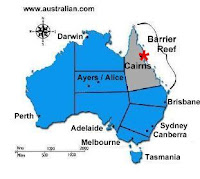Description
The jaguar (Panthera onca) is the largest cat of the Americas and a formidable predator. Its common name comes from the native Indian name ‘yaguara’, meaning ‘a beast that kills its prey with one bound, and its power is clearly displayed by its muscular build, deep chest, large head, broad muzzle, and strong jaws. This remarkable cat possesses a visually striking coat of large black rosettes, mostly enclosing dark spots, set against golden brown to yellow fur, which pales to white on the cheeks, throat and underside. Melanistic forms are also relatively common, often called ‘black panthers’ in the Americas. Jaguars vary considerably in size in different regions, but genetic studies indicate that there are no subspecies . Jaguars found in the dense forested areas of the Amazon Basin are generally smallFier and darker in colour than those found in more open terrain.
Habitat
The jaguar is found in a variety of habitats across its range, from dense rainforest to seasonally flooded swamp areas, scrubland and savannas, but always near water. Primarily occupying lowlands of below 1,000 metres, sightings of jaguars have been reported as high as 3,800 metres.
Status.
Threats
Sadly, human activities have generated the principle threat to the survival of the jaguar. Commercial hunting for their pelts was responsible for the death of 18,000 jaguars a year in the 1960s and 1970s. Fortunately, this toll has declined dramatically since the mid-1970s as a result of anti-fur campaigns and CITES controls, which progressively shut down international markets. Due to their predation on domestic livestock, the killing of jaguars by cattle-ranchers is also an ongoing problem. One of the primary threats today comes from deforestation, which is having a drastic impact on the jaguar’s prey base, as well as fragmenting the cat’s population into more isolated pockets, making them more vulnerable to the predations of man.


.jpg)






.jpg)


.jpg)
.jpg)


